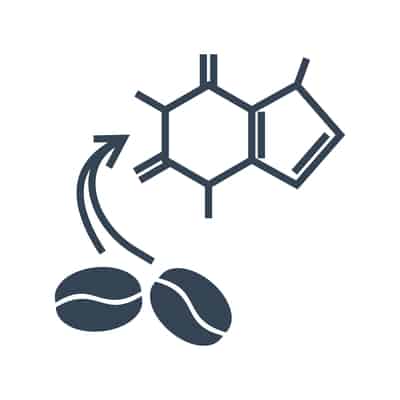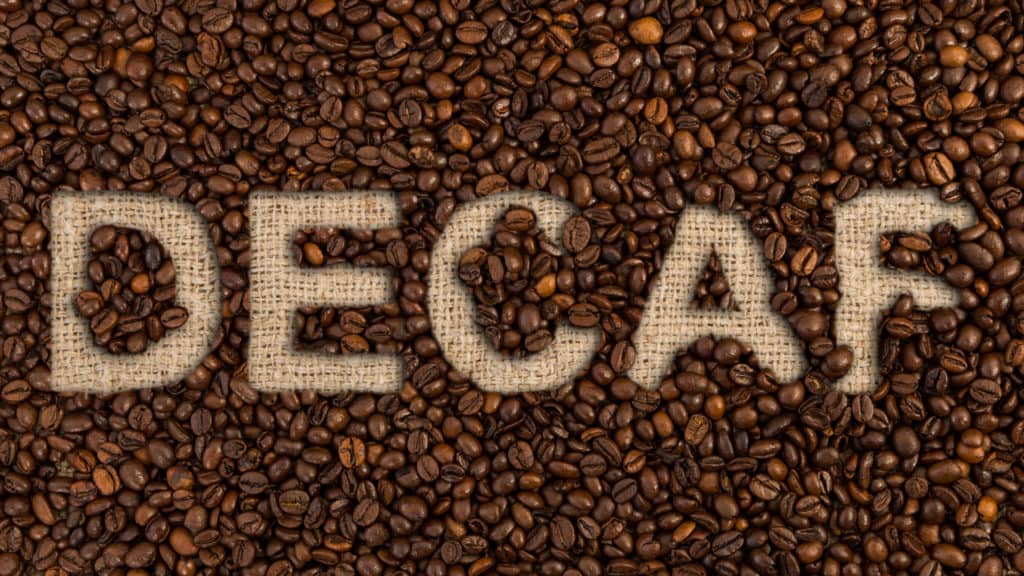For many coffee drinkers, a freshly brewed cup of joe is a ritual, a habit, and a preference. With that being said, even a cup of decaf coffee is capable of bringing joy to coffee lovers.
Regular coffee drinkers can expect a milder taste when switching to decaf, which is something that might take time to get used to. However, when it comes to the nutritional value of decaffeinated coffee, it is almost identical to regular coffee. Both decaf and regular coffee can help prevent certain diseases due to the antioxidants and nutrients. However, only regular coffee will give you that temporary increase in energy, performance, and concentrations.
Some coffee lovers experience discomfort and restlessness from regular coffee, which is a valid reason to switch to decaf. In other circumstances, doctors might even suggest that patients cut down on caffeine if they have high blood pressure or heart issues. In reality, the effect of caffeine differs from person to person.
What Is Decaf Coffee Exactly?
Decaf coffee is regular coffee minus the caffeine. The process of extracting the caffeine from the coffee beans is called decaffeination, and it is done before roasting occurs.
Decaffeination only eliminates the caffeine in the beans and not the antioxidants, nutrients, and flavors.
Keep in mind that it is impossible to get rid of the caffeine 100% through any decaffeination method. Therefore, decaf coffee is not entirely caffeine-free. However, the amount of caffeine that remains is tiny, as at least 97% of caffeine can be removed through decaffeination.
How Did The Decaffeination Process Originate?
In 1820, Friedlieb Ferdinand Runge was the first to isolate pure caffeine from coffee beans However, it was German merchant Ludwig Roselius who invented the first commercially successful decaffeination process in 1903.
Ludwig accidentally discovered this method when his freight of coffee beans lost much of its caffeine after being soaked in seawater. Later on, he and others developed various ways of decaffeinating.
The original decaffeination method of Ludwig involved steaming coffee beans in multiple acids or bases. Benzene was then used as a solvent to remove the caffeine. When they discovered that benzene is a health hazard, benzene was no longer used as a solvent commercially.
Today, several methods are used for decaffeination, including solvent extraction, of which the most common solutions are dichloromethane and ethyl acetate.
What Methods Are Used To Decaffeinate Coffee?

1. Organic Solvent Processes
– Direct Method
The oldest decaffeination method and also the most common is the direct solvent method.
In this method, the coffee beans are steamed to open their pores and rinsed with a solvent like methylene or ethyl acetate.
The caffeine’s extraction occurs during the rinsing step as the caffeine selectively unites with the solvent molecules. Rinsing is repeated 8 to 12 times until the caffeine content meets the required standard.
The other constituents are largely unaffected during this process. After the caffeine removal is done, another steam is given to the beans to remove solvent residues.
– Indirect Method
In the indirect method, the beans are soaked in hot water for several hours. The water, which is now a strong coffee, is then transferred to another tank where the solvent dichloromethane or ethyl acetate is added to the water to extract the caffeine.
Next, the caffeine-laden solvent gets skimmed from the water, leaving only caffeine-free substances in the water. The final step is to add the water back into the first tank so that the beans can reabsorb the flavor-bearing substances.
2. Supercritical CO2 Process
The most recent method is the carbon dioxide method. Supercritical CO2 is primarily used to decaffeinate large quantities of commercial-grade, less-exotic coffee.
In this process, the coffee beans are placed in an extraction vessel after being soaked in water. Liquid CO2 then gets forced into the coffee at a high pressure and heat to extract the caffeine. The caffeine gets dissolved into the CO2 but the large flavor molecule components remain in the bean.
3. Swiss Water Process
The Swiss water method relies on solubility and osmosis to decaffeinate coffee beans and not chemicals to extract the caffeine.
A batch of beans is soaked in very hot water to dissolve all the substances inside the coffee beans. The water is then filtered through an activated charcoal filter. The porosity of this filter is sized to capture only the larger caffeine molecules. Only smaller oil and flavor molecules can pass through the filter into another tank. This results in beans with no caffeine and no flavor in one tank and flavored charged-water (aka, green coffee extract) in another tank.
After this step, the flavorless caffeine-free beans are discharged, and the same process is performed on another fresh batch of coffee beans, but this time the flavor-rich water (green coffee extract) is used for soaking the beans.
Since the water already contains flavor ingredients, it does not allow the fresh batch of beans to dissolve its flavor molecules. The only molecules that can move into the water are the caffeine components which results in decaffeination without a massive loss of flavor.
Coffee decaffeinated through this method will always be labeled as “SWISS WATER” decaf in stores. The Swiss water method is exclusively used for the decaffeination of organic coffee.
4. Triglyceride Process (direct-contact method of decaffeination)
In the Triglyceride process, the beans are also soaked in hot water to expose the caffeine. Next, the beans are poured into another container containing coffee oils obtained from spent coffee grounds where they are left to soak.
The oils contain triglycerides that remove the caffeine in the beans after several hours of high temperatures. This does not remove the flavor elements from the beans. Afterward, the decaffeinated beans are separated from the oils and dried, and the oils get reused to decaffeinate another batch of beans.
Decaffeination Methods Have Come A Long Way!
Since coffee contains around 1000 chemicals, which creates the delicious taste and aroma, it is evident that decaffeination is not a simple task. The methods mentioned above have come a long way since the first decaffeination process was invented.
Today’s decaffeination methods are not a health concern, and they leave the beans with flavor precursors in as close to their original state as possible. Still, the decaffeination process is yet to be perfected as adulteration of the coffee bean cannot be avoided. Furthermore, regardless of the decaffeination method, the caffeine cannot be 100 percent removed.
Decaffeinated coffee beans undergo a quality inspection, which ensures that the caffeine concentration is relatively low. The United States requires that at least 97% of caffeine is removed, and the European Union requires that at least 99.9% of the caffeine content need to be extracted before it can be sold as decaf coffee.
Will Decaf Become Your New Regular?
Decaffeinated coffee accounts for about only 12% of total global coffee consumption. However, since decaf coffee is trending among health conscious-millennials, the chances of decaf becoming even more popular are very high.
If you want to cut down on caffeine for whatever reason but still want to enjoy the taste of coffee, then decaf is the only way to go. Besides, after reading this article, you now know that decaf does not contain harmful chemicals nor does it lack the nutritional value found in regular coffee. Therefore, the only thing that might stand in your way of going decaf is the caffeine-withdrawal symptoms that you will have to face.

